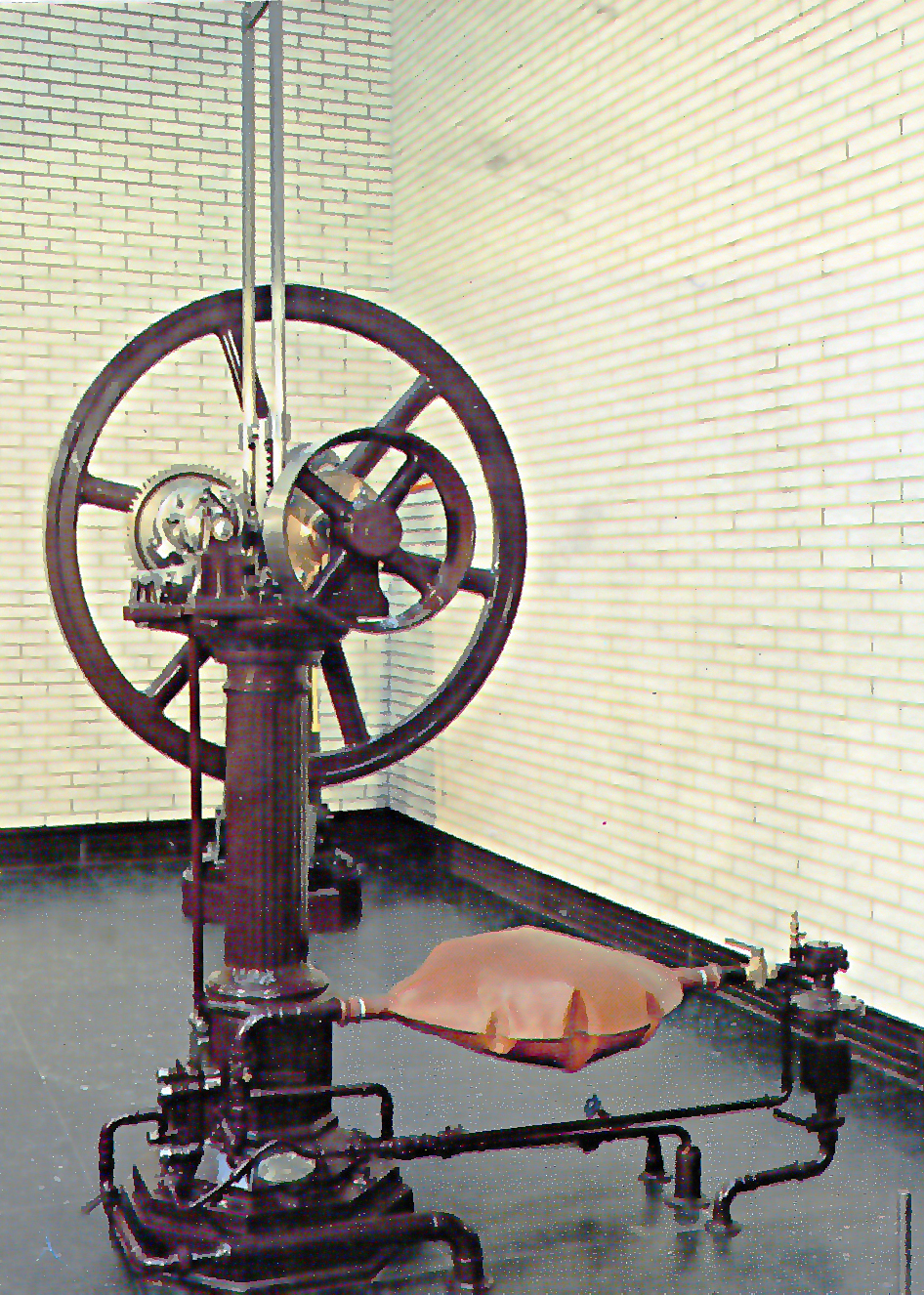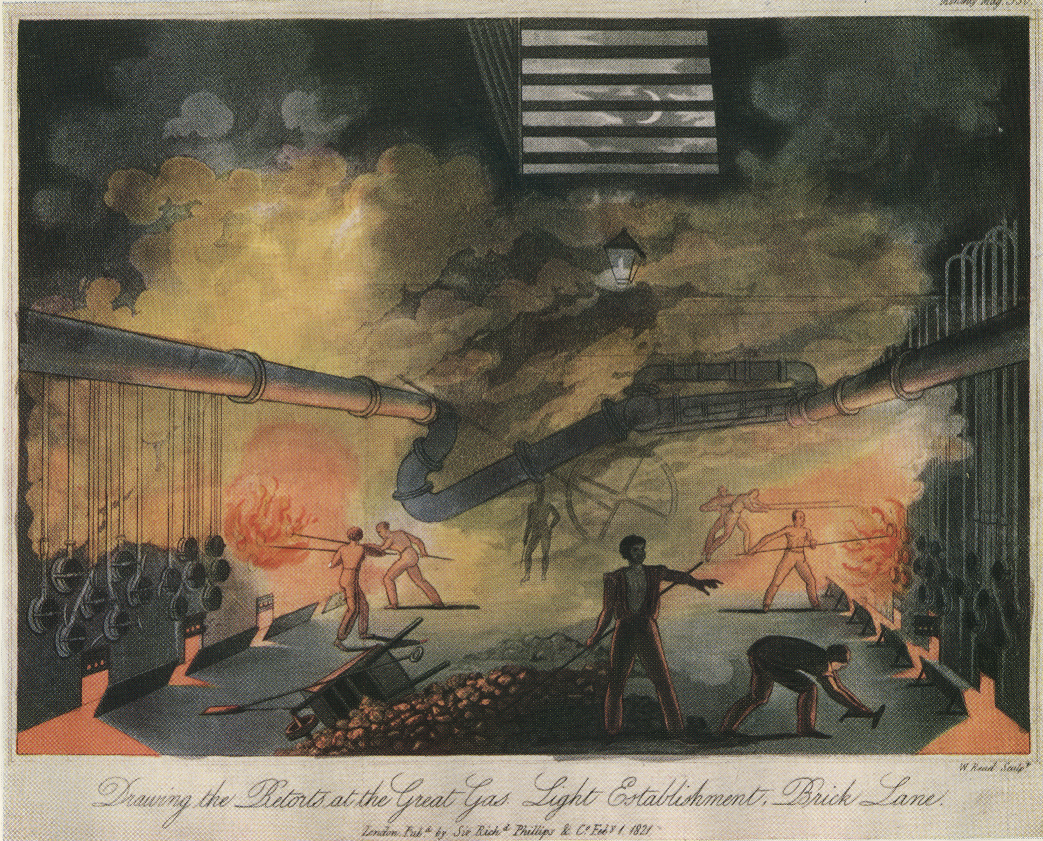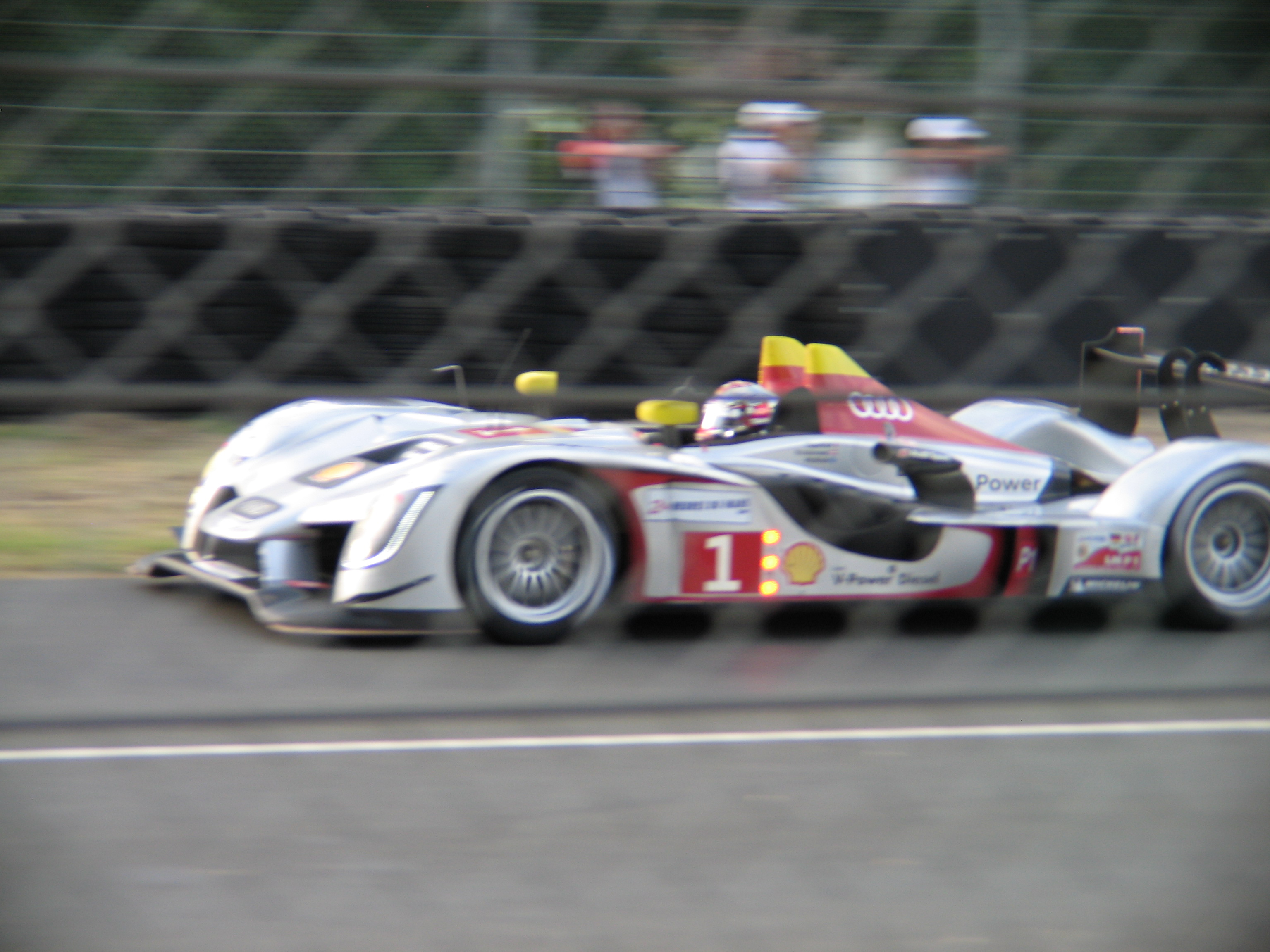|
Nicholaus Otto
Nicolaus August Otto (10 June 1832, Holzhausen an der Haide, Nassau – 26 January 1891, Cologne) was a German engineer who successfully developed the compressed charge internal combustion engine which ran on petroleum gas and led to the modern internal combustion engine. The Association of German Engineers (VDI) created DIN standard 1940 which says "Otto Engine: internal combustion engine in which the ignition of the compressed fuel-air mixture is initiated by a timed spark", which has been applied to all engines of this type since. Biography Nicolaus August Otto was born on 10 June 1832 in Holzhausen an der Haide, Germany. He was the youngest of six children. His father died in 1832. He began school in 1838. After six years of good performance he moved to the high school in Langenschwalbach until 1848. He did not complete his studies but was cited for good performance. His main interest in school had been in science and technology but he graduated after three years as a bu ... [...More Info...] [...Related Items...] OR: [Wikipedia] [Google] [Baidu] |
Holzhausen An Der Haide
Holzhausen an der Haide is a municipality in the district of Rhein-Lahn, in Rhineland-Palatinate, in western Germany. Holzhausen is the birthplace of Nicolaus August Otto, the inventor of the "Otto Engine The Otto engine was a large stationary single-cylinder internal combustion four-stroke engine designed by the German Nicolaus Otto. It was a low-RPM machine, and only fired every other stroke due to the Otto cycle, also designed by Otto. Typ ...". References Municipalities in Rhineland-Palatinate Rhein-Lahn-Kreis {{RheinLahn-geo-stub ... [...More Info...] [...Related Items...] OR: [Wikipedia] [Google] [Baidu] |
History Of Manufactured Gas
The history of gaseous fuel, important for lighting, heating, and cooking purposes throughout most of the 19th century and the first half of the 20th century, began with the development of analytical and pneumatic chemistry in the 18th century. The manufacturing process for "synthetic fuel gases" (also known as "manufactured fuel gas", "manufactured gas" or simply "gas") typically consisted of the gasification of combustible materials, usually coal, but also wood and oil. The coal was gasified by heating the coal in enclosed ovens with an oxygen-poor atmosphere. The fuel gases generated were mixtures of many chemical substances, including hydrogen, methane, carbon monoxide and ethylene, and could be burnt for heating and lighting purposes. Coal gas, for example, also contains significant quantities of unwanted sulfur and ammonia compounds, as well as heavy hydrocarbons, and so the manufactured fuel gases needed to be purified before they could be used. The first attempts to manufa ... [...More Info...] [...Related Items...] OR: [Wikipedia] [Google] [Baidu] |
Combustion Chamber
A combustion chamber is part of an internal combustion engine in which the fuel/air mix is burned. For steam engines, the term has also been used for an extension of the firebox which is used to allow a more complete combustion process. Internal combustion engines In an internal combustion engine, the pressure caused by the burning air/fuel mixture applies direct force to part of the engine (e.g. for a piston engine, the force is applied to the top of the piston), which converts the gas pressure into mechanical energy (often in the form of a rotating output shaft). This contrasts an external combustion engine, where the combustion takes place in a separate part of the engine to where the gas pressure is converted into mechanical energy. Spark-ignition engines In spark ignition engines, such as petrol (gasoline) engines, the combustion chamber is usually located in the cylinder head. The engines are often designed such that the bottom of combustion chamber is roughly in li ... [...More Info...] [...Related Items...] OR: [Wikipedia] [Google] [Baidu] |
Coal-gas
Coal gas is a flammable gaseous fuel made from coal and supplied to the user via a piped distribution system. It is produced when coal is heated strongly in the absence of air. Town gas is a more general term referring to manufactured gaseous fuels produced for sale to consumers and municipalities. The original coal gas was produced by the coal gasification reaction, and thus the burnable component consisted of a roughly equal molecular mixture of carbon monoxide and hydrogen. Thus, coal gas was highly toxic. Other compositions contain additional calorific gases such as methane, produced by the Fischer-Tropsch process, and volatile hydrocarbons together with small quantities of non-calorific gases such as carbon dioxide and nitrogen. Prior to the development of natural gas supply and transmission—during the 1940s and 1950s in the United States and during the late 1960s and 1970s in the United Kingdom and Australia—almost all gas for fuel and lighting was manufactured f ... [...More Info...] [...Related Items...] OR: [Wikipedia] [Google] [Baidu] |
Engine
An engine or motor is a machine designed to convert one or more forms of energy into mechanical energy. Available energy sources include potential energy (e.g. energy of the Earth's gravitational field as exploited in hydroelectric power generation), heat energy (e.g. geothermal), chemical energy, electric potential and nuclear energy (from nuclear fission or nuclear fusion). Many of these processes generate heat as an intermediate energy form, so heat engines have special importance. Some natural processes, such as atmospheric convection cells convert environmental heat into motion (e.g. in the form of rising air currents). Mechanical energy is of particular importance in transportation, but also plays a role in many industrial processes such as cutting, grinding, crushing, and mixing. Mechanical heat engines convert heat into work via various thermodynamic processes. The internal combustion engine is perhaps the most common example of a mechanical heat engine, in which he ... [...More Info...] [...Related Items...] OR: [Wikipedia] [Google] [Baidu] |
Automobile
A car or automobile is a motor vehicle with Wheel, wheels. Most definitions of ''cars'' say that they run primarily on roads, Car seat, seat one to eight people, have four wheels, and mainly transport private transport#Personal transport, people instead of cargo, goods. The year 1886 is regarded as the birth year of the car, when German inventor Carl Benz patented his Benz Patent-Motorwagen. Cars became widely available during the 20th century. One of the first cars affordable by the masses was the 1908 Ford Model T, Model T, an American car manufactured by the Ford Motor Company. Cars were rapidly adopted in the US, where they replaced Draft animal, animal-drawn carriages and carts. In Europe and other parts of the world, demand for automobiles did not increase until after World War II. The car is considered an essential part of the Developed country, developed economy. Cars have controls for driving, parking, passenger comfort, and a variety of lights. Over the decades, a ... [...More Info...] [...Related Items...] OR: [Wikipedia] [Google] [Baidu] |
Otto Engine
The Otto engine was a large stationary single-cylinder internal combustion four-stroke engine designed by the German Nicolaus Otto. It was a low-RPM machine, and only fired every other stroke due to the Otto cycle, also designed by Otto. Types Three types of internal combustion engines were designed by German inventors Nicolaus Otto and his partner Eugen Langen. The models were a failed 1862 compression engine, an 1864 atmospheric engine, and the 1876 Otto cycle engine known today as the ''gasoline engine''. The engines were initially used for stationary installations, as Otto had no interest in transportation. Other makers such as Daimler perfected the Otto engine for transportation use. Nikolaus August Otto: Inventor Of The Internal Combustion Engine. [...More Info...] [...Related Items...] OR: [Wikipedia] [Google] [Baidu] |
Gottlieb Daimler
Gottlieb Wilhelm Daimler (; 17 March 1834 – 6 March 1900) was a German engineer, industrial designer and industrialist born in Schorndorf (Kingdom of Württemberg, a federal state of the German Confederation), in what is now Germany. He was a pioneer of internal-combustion engines and automobile development. He invented the high-speed liquid petroleum-fueled engine. Daimler and his lifelong business partner Wilhelm Maybach were two inventors whose goal was to create small, high-speed engines to be mounted in any kind of locomotion device. In 1883 they designed a horizontal cylinder layout compressed charge liquid petroleum engine that fulfilled Daimler's desire for a high speed engine which could be throttled, making it useful in transportation applications. This engine was called Daimler's Dream. In 1885 they designed a vertical cylinder version of this engine which they subsequently fitted to a two-wheeler, the first internal combustion motorcycle which was named the Petro ... [...More Info...] [...Related Items...] OR: [Wikipedia] [Google] [Baidu] |
Four Stroke
A four-stroke (also four-cycle) engine is an internal combustion (IC) engine in which the piston completes four separate strokes while turning the crankshaft. A stroke refers to the full travel of the piston along the cylinder, in either direction. The four separate strokes are termed: #Intake: Also known as induction or suction. This stroke of the piston begins at top dead center (T.D.C.) and ends at bottom dead center (B.D.C.). In this stroke the intake valve must be in the open position while the piston pulls an air-fuel mixture into the cylinder by producing vacuum pressure into the cylinder through its downward motion. The piston is moving down as air is being sucked in by the downward motion against the piston. #Compression: This stroke begins at B.D.C, or just at the end of the suction stroke, and ends at T.D.C. In this stroke the piston compresses the air-fuel mixture in preparation for ignition during the power stroke (below). Both the intake and exhaust valves are clos ... [...More Info...] [...Related Items...] OR: [Wikipedia] [Google] [Baidu] |
Four Cycle
A four-stroke (also four-cycle) engine is an internal combustion (IC) engine in which the piston completes four separate strokes while turning the crankshaft. A stroke refers to the full travel of the piston along the cylinder, in either direction. The four separate strokes are termed: #Intake: Also known as induction or suction. This stroke of the piston begins at top dead center (T.D.C.) and ends at bottom dead center (B.D.C.). In this stroke the intake valve must be in the open position while the piston pulls an air-fuel mixture into the cylinder by producing vacuum pressure into the cylinder through its downward motion. The piston is moving down as air is being sucked in by the downward motion against the piston. #Compression: This stroke begins at B.D.C, or just at the end of the suction stroke, and ends at T.D.C. In this stroke the piston compresses the air-fuel mixture in preparation for ignition during the power stroke (below). Both the intake and exhaust valves are close ... [...More Info...] [...Related Items...] OR: [Wikipedia] [Google] [Baidu] |
Felice Matteucci
Felice Matteucci (February 12, 1808 – September 13, 1887) was an Italian hydraulic engineer who co-invented an internal combustion engine with Eugenio Barsanti. Their patent request was granted in London on June 12, 1854, and published in London's Morning Journal under the title "Specification of Eugene Barsanti and Felix Matteucci, Obtaining Motive Power by the Explosion of Gases", as documented by the Fondazione Barsanti e Matteucci. Biography Born in Lucca, Tuscany, Matteucci studied hydraulic and mechanical engineering, first in Paris, then in Florence. In 1851 he met Father Barsanti and appreciated his ideas for a new type of engine. They worked together to turn the primary concept into a manufacturable item, eventually developing a model suitable for mass production. Its construction was entrusted to Bauer & Co. of Milan, a company also known as Helvetica, which delivered the motor at the beginning of 1863. The success of the engine, which was much more efficient that ... [...More Info...] [...Related Items...] OR: [Wikipedia] [Google] [Baidu] |
Eugenio Barsanti
Father Eugenio Barsanti (12 October 1821 – 19 April 1864), also named Nicolò, was an Italian engineer, who together with Felice Matteucci of Lucca invented the first version of the internal combustion engine in 1853. Their patent request was granted in London on June 12, 1854, and published in London's ''Morning Journal'' under the title "Specification of Eugene Barsanti and Felix Matteucci, Obtaining Motive Power by the Explosion of Gasses", as documented by the Fondazione Barsanti e Matteucci. Biography Barsanti was born in Pietrasanta, Tuscany. Lean and short of stature, he studied in a Catholic scientific-oriented institute near Lucca, in Tuscany, and became entered the novitiate of the Piarist Fathers or Scolopi, who were known for being open to scientific study, in Florence in 1838. In 1841 Barsanti began teaching in the ''Collegio San Michele'', situated in Volterra. Here, during a lecture describing the explosion of mixed hydrogen and air, he realised the potential fo ... [...More Info...] [...Related Items...] OR: [Wikipedia] [Google] [Baidu] |










